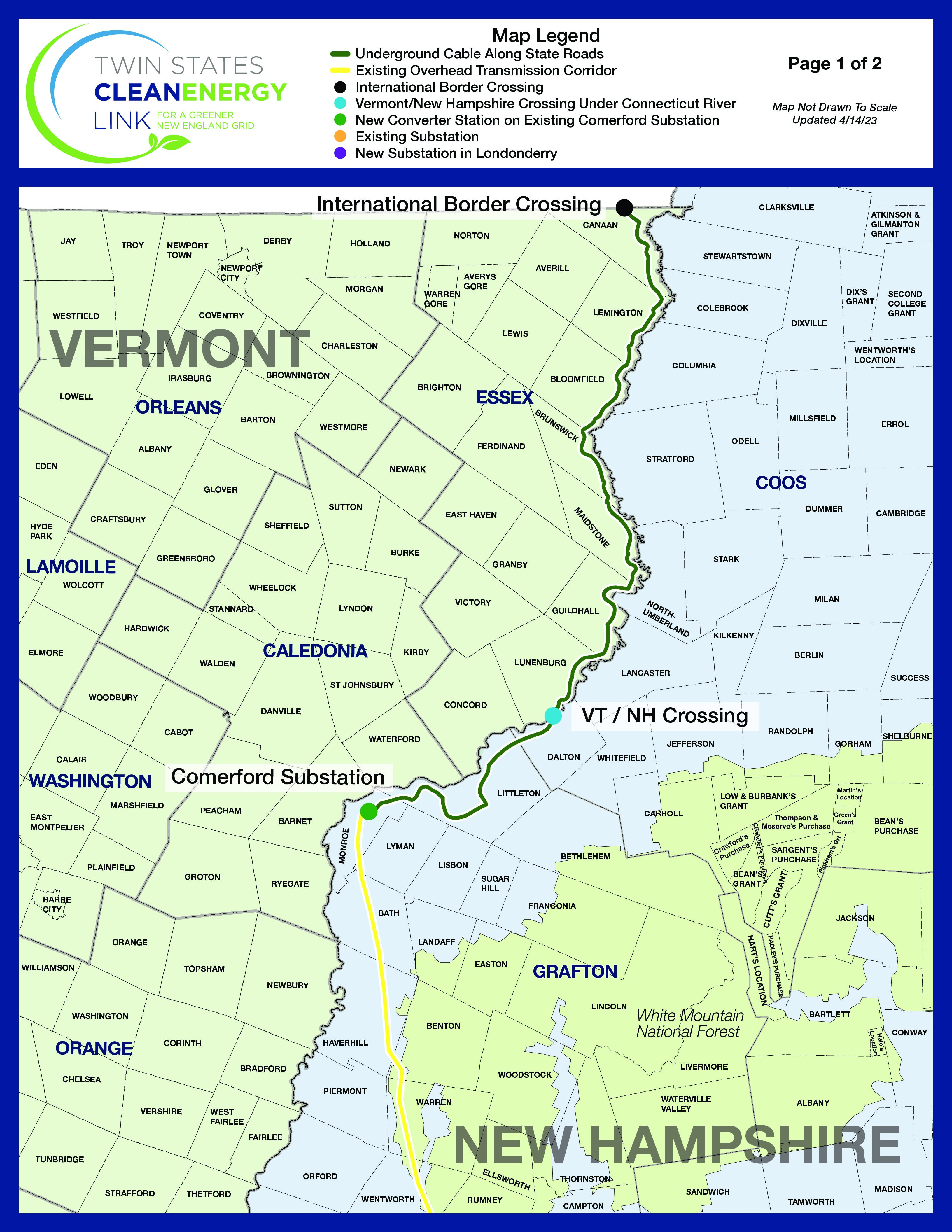A transmission line that would bring Canada hydropower into New Hampshire and also let New England send power north is one of three projects to get federal support, part of a $1.3 billion commitment designed to increase the nation’s ability to move electricity around as needed.
The proposed Twin States Clean Energy Link from National Grid was chosen along with two interstate transmission lines out West to enter into capacity contract negotiations with the Department of Energy. Under the contracts, DOE will commit to purchasing a percentage of the total capacity of the lines, making it easier to lure other investors.
National Grid said in a statement that more financing is being lined up, and a considerable amount of regulatory approval is needed before the line can become a reality. The earliest construction could begin is 2026.
The proposed 211-mile, $2 billion Twin State Clean Energy Link would be capable of carrying 1,200 megawatts of electricity, equivalent to the output of Seabrook Station nuclear plant, either from Quebec into the U.S. or the other way around as needed. Such flexibility in the electric grid is increasingly important due to increasing amounts of solar and wind power, which can’t be turned on and off to meet shifting demand.
While the bulk of power from Canada would probably come from massive dams in Quebec, the line could also handle electricity from other sources.
The proposed line would enter the United States at Canaan, Vt., be buried along state highways in Vermont and New Hampshire, going under the Connecticut River, until it connects to an existing transmission corridor in Monroe, New Hampshire, where beefed-up poles and lines which would carry the power to a new substation in Londonderry.
“This is an important step forward for Twin States as we work to make the project a reality for the region,” said Stephen Woerner, New England President of National Grid, in a prepared statement.
Also chosen for support was a 214-mile, 1500 MW transmission line in Nevada and Utah, and a 175-mile, 748 MW transmission line between New Mexico and Arizona.
On Monday the DOE released the final National Transmission Needs Study that said the country must, by 2035, must double regional transmission capacity and expand existing interregional transmission capacity by more than fivefold to allow economy-wide decarbonization.
For years the Northeastern United States has tried to find ways to take advantage of hydropower produced in Canada and Canadian officials have been eager to sell power in the U.S. Hydro-Quebec has agreed to a 25-year contract to sell power for use in New York City via the under-construction Champlain Hudson Power Express, and wants to send power to Massachusetts via the stalled New England Clean Energy Connect through Maine.
That desire was behind the ill-fated Northern Pass project to bring power down through New Hampshire, which was canceled in 2017 after years of debate. That project would have required some new power corridors, including one in the White Mountain National Forest.


 Return to the Concord Monitor
Return to the Concord Monitor